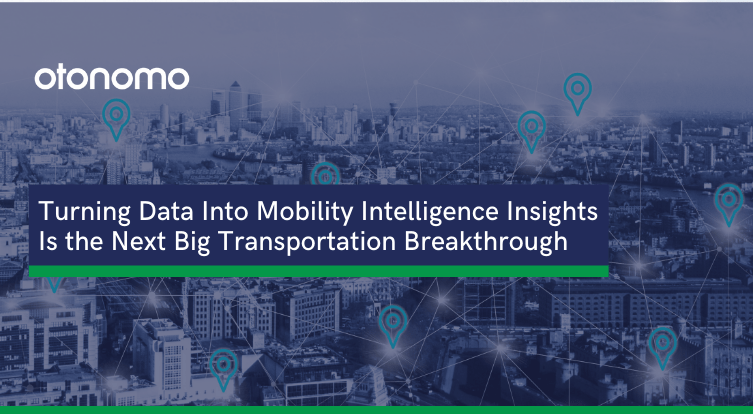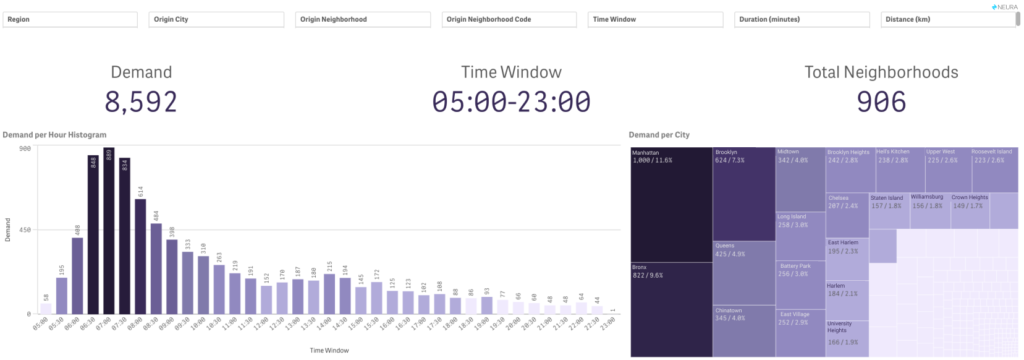
This article was written with the assistance of our friends at Neura (acquired by Otonomo) who transform large amounts of data and mobility intelligence into impactful insights
There’s something very big that’s happening in transportation, and it’s easily the biggest shift that humanity has ever experienced in our ability to go somewhere. It’s the digitization and coalescence of how we get from A to B, which is the foundational piece of what I call “New Mobility”.
Some would throw out such statements as just more hyperbole from another SPAC fueled Silicon Valley technology startup, however what we are starting to see is the foundational reimagination of travel – both for people and goods.
In automotive circles, we’ve seen the emergence of New Mobility expressed in CASE (or ACES) terms – Connected, Autonomous, Shared and Electric.
Connected vehicles allow communication from base to vehicle and back, and we’ve seen over the air (OTA) software updates become commonplace on brands like Tesla. What’s more, Tesla vehicles also communicate back to head office with data, such as when on autopilot, and other tracking tools.
While autonomous technology is still a few years from maturity, there are many OEMs and software companies that are making big inroads in refining the technology, just as Waymo, Argo and Cruise. Others, such as TUSimple, are just focusing on the truck on highway component to reduce the complexity of the problem to be solved.
Shared mobility is an area that has promised much, yet has not seen a true breakthrough. Certainly, the Uber and Lyft model changed the way we catch rides, but profit has been elusive. Car sharing and subscription have also seen ups and downs, with interesting ideas, but haven’t quite broken through. The same goes for shared micro mobility.
Beyond this is the idea of Mobility as a Service (or MaaS), where multiple travel modes can be combined into a seamless single payment travel option, are also being tested and deployed. This allows the integration of our car into a much wider transportation ecosystem, one that by knowing the customer and the network points of need, the right solution can be quickly deployed.
Mobility intelligence enables organizations to understand the needs, preferences and point of interest of their target riders, in order to make informed data-driven decisions about where to deploy relevant services.” emphasized Shawn Stein of Neura (acquired by Otonomo). In other words, by understanding movement, the appropriate infrastructure can be placed at the right points to best serve our needs.
Electric vehicles have rightly garnered much attention in recent times. While Tesla has dominated industry talk with it’s outspoken CEO and generally excellent vehicles, incumbent OEMs have moved quickly to introduce new electric models as countries tighten emissions regulations and use a carrot and stick incentive / tax approaches to persuade people to go zero emissions.
Underneath all of these major technologies are new platforms that must support and connect vehicles to drivers to infrastructure. These ensure a seamless, connected and enjoyable travel experience.
However, for such a platform to truly work well, and for the business to provide the very best customer experience, smart choices need to be made. Things like:
- Where is the optimum place to put an electric vehicle charger?
- What is the best route to the destination?
- Where to park?

To answer this, we need some data, like:
- Where are people going?
- How many people are in the vehicle?
- How long are people in their car or transportation choice for?
- When is peak traveling time?

Such data is available, whether it is through the vehicle, through cell phone or other means. Making sense of this data is key to generating the insight that companies need to make the right decisions – after all it’s no use having data if it doesn’t make you smarter.
Being smart in data-based decision making allows for increased utilisation, better efficiency and lower costs – which has a direct impact on profit. This is where data insight companies like Neura (acquired by Otonomo) come in and enable clients to turn data noise into useful insight.
What’s more, data lets us explore new opportunities. Let’s face it, while sitting in a vehicle, customers are essentially a captive audience while waiting to get from A to B. Today, someone might choose to listen to podcasts or music, and if they’re not driving, watch content on their phone, or surf social media channels. However, people also take in personal information and are influenced externally through OOH (out of home) advertising media, new experiences and observations of the world around them.
I can imagine billboards that continuously update for the right audience, signs at transportation stops or stations that have personally curated advertising and even routes that change to influence people’s shopping decisions and interests.
Thus, a new cutting-edge question is not only how can transportation become a customized user experience that is seamless and enjoyable, but also how can we generate the attention of transportation users? Just as phone apps continually take in data and learn about us, thereby customizing their message towards us, transportation must do the same.
Such an opportunity to market to a captive audience is huge, but must be done in a complementary and value add fashion.
We’re still at a relatively early stage in figuring out the platform opportunities New Mobility presents, however, it’s abundantly clear that it is data insight that truly unpacks the real value, and I’m very excited to see what will be discovered. Perhaps it might be you that strikes the gold.












More Stories
Click Shield from MIKROE simplifies integration of Arduino Portenta with over 1600 Click boards
Optimizing Mid-Power Silicon MOSFETs for Automotive Applications
Paolo Pininfarina named the 2024 Laureate of The American Prize for Design